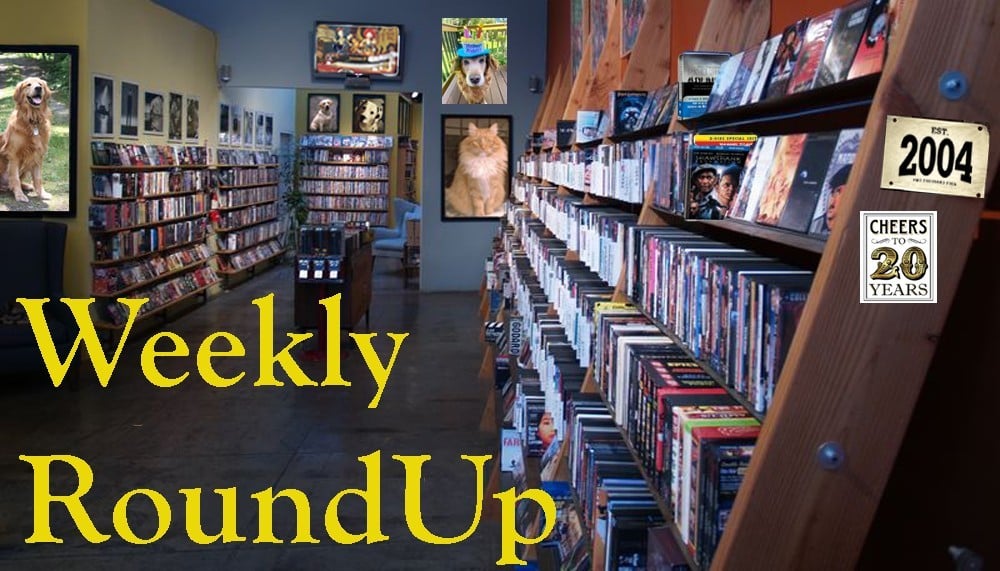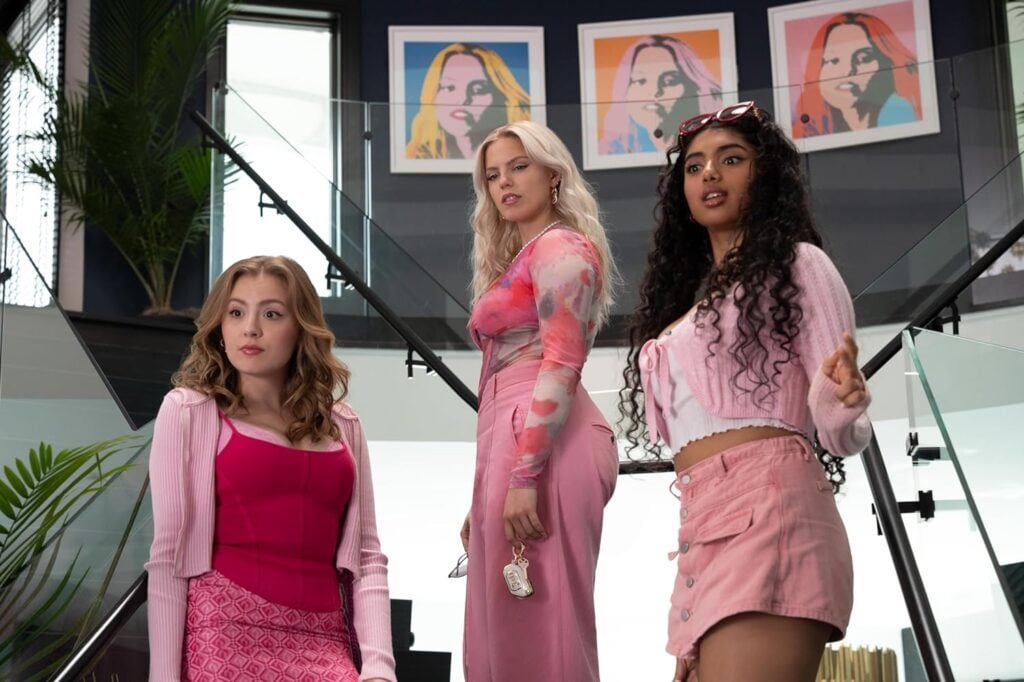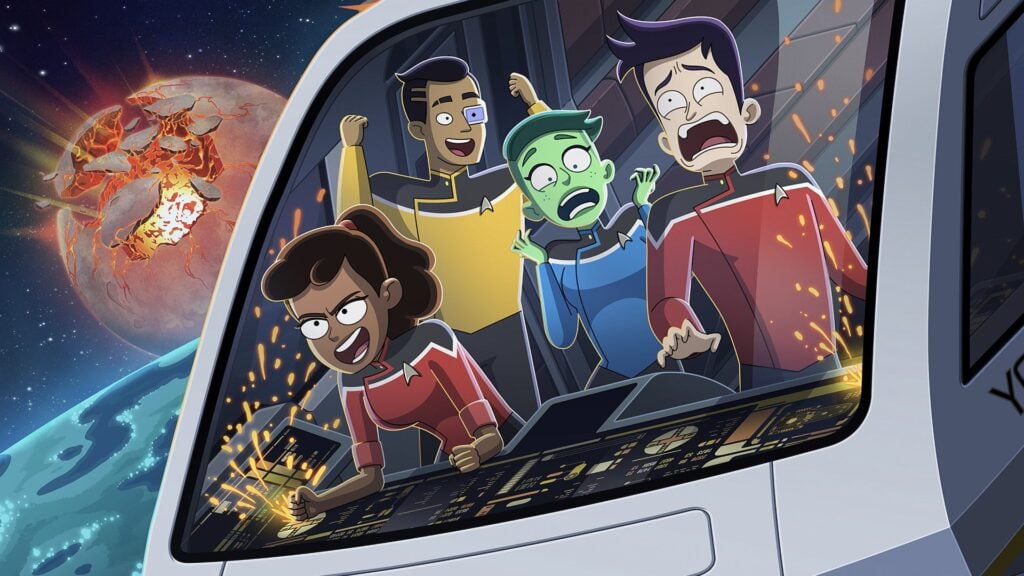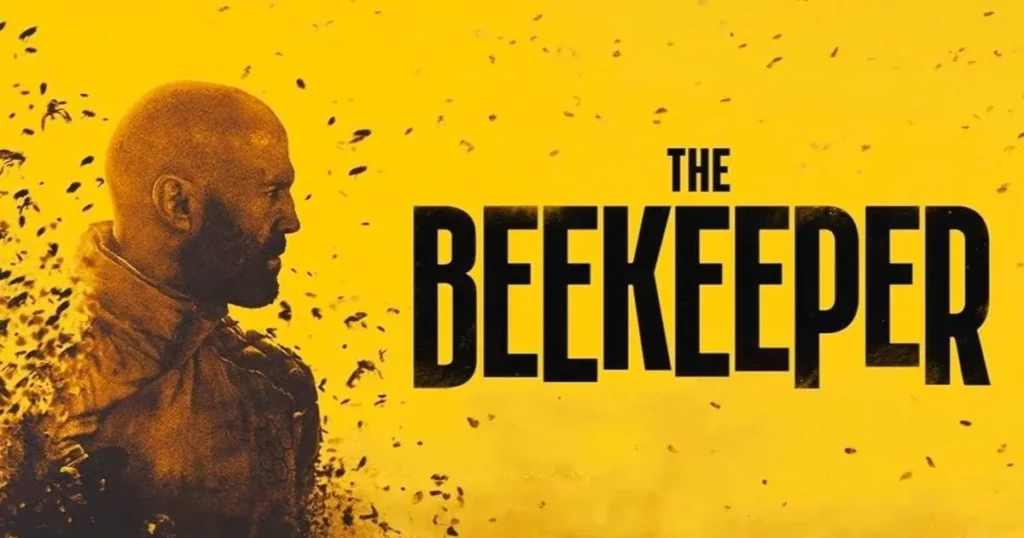Roy Rogers and his famous horse Trigger return to screen in the 1950 Republic production of Trigger, Jr., in glorious Trucolor. In the film, Roy and Trigger find themselves sidetracked after a storm. They come upon a local ranch, where both are immediately welcomed. However, when a dispute between the local ranchers and an evil posse results in Roy’s beloved horse being blinded, it’s up to a young boy and the excitable Trigger, Jr. to save the day.
The Production: 3.5/5
Trigger, Jr. is a 1950 western produced by Republic Pictures in their unique Trucolor process. Running just 66 minutes, the film is pure b-movie fun, with a simple but engaging plot, some thrilling stunts and a handful of enjoyable musical performances. In the years after its release, as Republic folded, this and many of the other Roy Rogers pictures were sold off for television, where the color footage was either badly preserved or lost, and the films themselves cut down to be able to run in an hour-long slot. At long last this release from Kino, featuring a brand new 4K restoration from the Paramount Pictures Archives, allows the film to be seen at its original length and with its beautiful color intact.
The film’s plot involves Roy Rogers, his horse Trigger, and his “Fabulous Western Show” carnival of performers, including his band, the Riders of the Purple Sage. When a windstorm detours them from their planned destination, they set up camp at a local ranch, run by the widowed Kay Harkrider (played by Roy’s real-life wife, Dale Evans). Harkrider runs the ranch with a young son, Larry (Peter Miles) who has a fear of horses, and her father Colonel Harkrider (George Cleveland). Though the Harkriders are warm and gracious hosts to Roy, trouble soon appears in the form of Manson (Grant Withers), a member of the evil Range Patrol that wants to put the Harkriders and the rest of the local ranchers out of business. Manson steals a killer horse, scheduled to be put down, and strategically unleashes that horse at night raids, resulting in the deaths and injuries of the horses being raised by the Harkrider family and others. Manson hopes to extort protection money from the local ranchers in exchange for stopping the raids. Though Roy wants nothing more than to keep the peace, when the killer horse blinds his beloved Trigger, Roy must face a powerful adversary. A subplot involves the young Larry Harkrider and his fear of horses, and the rowdy Trigger, Jr., who initially appears untrainable but eventually forms a bond with Larry.
By the time Trigger, Jr. went into production, director William Witney had worked with Rogers well over a dozen times. Witney’s work here is remarkably efficient. Everything from his carefully choreographed use of location settings to his quick cuts in fight sequences work to give the illusion of the film being a bigger production than it actually was. Witney’s direction also allows Roy’s charisma to shine through. Roy Rogers is a born star and the screen lights up whenever he appears, whether it’s with Trigger, co-star/wife Evans, or the Riders of the Purple Sage band. Though the film’s tone can change quickly, from action to comedy to musical revue, these shifts are never jarring, and Witney keeps the proceedings moving along at an exciting pace that never feels rushed.
Video: 4.5/5
3D Rating: NA
Trigger, Jr. is presented in its original aspect ratio of 1.33:1 via the AVC codec. The transfer was created by Paramount Pictures Archives from a new 4K restoration of the original Trucolor nitrate negatives. The film looks phenomenal. Like Technicolor, Trucolor isn’t the sharpest photographic process, but the image here is remarkably detailed. The color, while different from both the Technicolor and single strip Eastman color productions of the time, is gorgeous. The filmmakers were obviously aware of the advantages and limitations of Trucolor, and have made good design choices which emphasize the best attributes of the format. This is by far the best the film has ever looked on any home video format; a quick look at older transfers created for television and VHS easily confirms what a revelation this new master is. There is a very slight amount of dirt and speckling that can appear from time to time, but absolutely nothing which distracts from the overall presentation. If it’s not quite pristine, it’s very close.
Audio: 4.5/5
The mono audio on the film is presented in a DTS-HD MA 2.0 track which my receiver automatically decoded into the center channel. Audio is generally clean and clear and free of age-related artifacts like hiss. Dialogue is well recorded, and the musical performances sound great.
Though the audio is perfectly satisfactory, unfortunately, no subtitles are available on this release.
Special Features: 3/5
Audio Commentary By Film Historian Toby Roan and Jay Dee Witney – This is a lively commentary that features both general observations and scene specific comments by historian Toby Roan and Jay Dee Witney, son of the film’s director William Witney. Though they are recorded separately, their comments alternate throughout the film. Roan covers the historical details, explaining where Rogers and Witney were in their careers when they made this film and recounting the few surviving anecdotes related to this specific production. Witney comments more broadly on his father’s career, and explains how modern filmmakers such as Quentin Tarantino have come to love his father’s films. One of this track’s great highlights is an audio recording that Jay Witney plays of William Witney speaking at a western film convention in the 1990s; the elder Witney recounts in great detail the process of shooting action sequences and working with horses on film. One of the more fascinating details to emerge from the commentary is that Witney pioneered the practice of filming fight scenes in small chunks rather than continuously from start to finish. As recounted in the track, one day Witney found himself on the set of a Busby Berkeley-type musical, and noticed how they would do a simple take of just one or two dance movies, cut, and move on to the next part of the dance, rather than trying to capture it all in a single take. Witney felt that the same technique could work for fight sequences as well. (Stuntmen, who had been used to performing an entire fight from start to finish and then repeating as many times as necessary, quickly came to love Witney’s new method of filming fights.) This commentary track is a great listen.
Trailers – The disc includes original theatrical trailers of varying technical quality for several other westerns released on disc by Kino (but not for Trigger, Jr.):
- Man Of The West (03:01, HD)
- Broken Arrow (01:59, SD)
- The Indian Fighter (02:25, SD)
- The Kentuckian (02:17, HD)
Overall: 4/5
Trigger, Jr. is a fun western from Republic Pictures, showcasing all of the attributes that made Roy Rogers the king of the cowboys. With an easy charm and talent both on and off a horse, the camera can’t help but love Roy, and William Witney provides efficient direction with a sure hand. Though the movie is lighthearted and occasionally a little over the top, it succeeds at everything it sets out to do, and is entirely satisfying for what it is. The new 4K restoration presented here is stunning, and if the disc is light on extras, the well-researched and affable commentary track more than makes up for the lack of a trailer. Perhaps the biggest overall shortcoming is that there’s nothing on the disc about the Trucolor process or the behind-the-scenes efforts by the Paramount Pictures Archives to create this beautiful new restoration, but even with those omissions, this disc will delight fans of classic westerns and Roy Rogers.
Josh’s fate as a physical media enthusiast was probably sealed the moment he figured out how to operate a top-loading VCR before he even knew how to walk. Since graduating with a degree in film production, he has enjoyed a career focused on the archival and distribution side of film and television. These days, Josh thinks of himself as a proud father of twins first. He would like to thank his wife for her unwavering support, and for every typo she’s ever caught.
Post Disclaimer
Some of our content may contain marketing links, which means we will receive a commission for purchases made via those links. In our editorial content, these affiliate links appear automatically, and our editorial teams are not influenced by our affiliate partnerships. We work with several providers (currently Skimlinks and Amazon) to manage our affiliate relationships. You can find out more about their services by visiting their sites.







Similar threads